The current emphasis on water-wise gardening has created an interest in succulents. All succulents are able to store water and food in their leaves, stems and roots. These stored nutrients can be released when needed. This makes them drought tolerant. Succulents require good drainage, deep but intermittent water, bright light, and good air circulation. The soil should be open and airy with low organic matter.
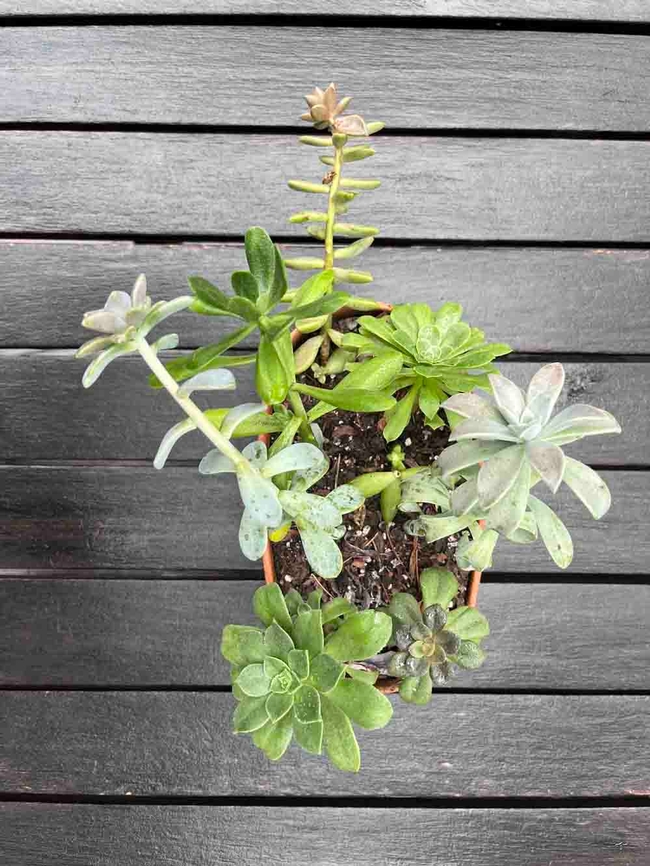
Because many purchased succulents are unmarked, while others are given by friends as cuttings, it can be difficult to know the genus of a particular plant. This is especially the case because the genera of Echeveria, Sempervivum, and Graptopetalum are similar in appearance. However, careful observation will aid in identifying succulents. First, look to see if the succulent is spiky or chubby, and whether it forms rosettes. What is the shape of the leaves? Look at size, texture, and color. Notice if offsets hang from the edges of a rosette, or attach to its center.
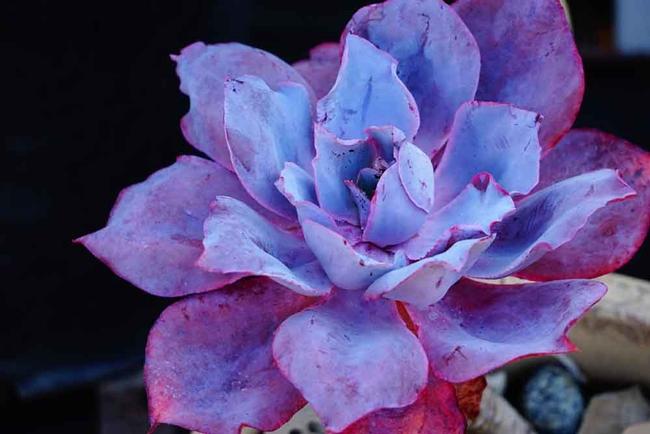
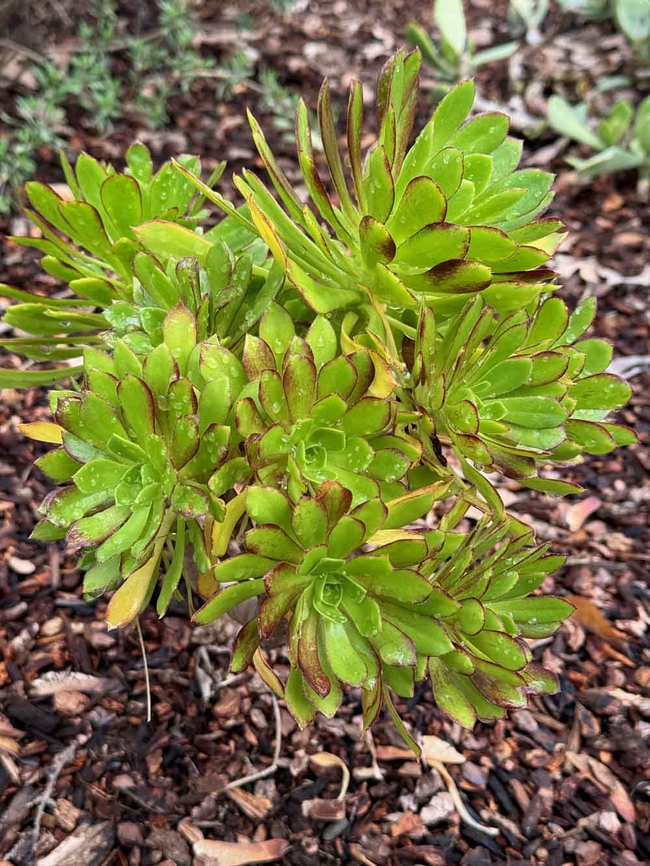
Sempervivums are native to Europe. Their value as talismans is reflected in their name semper (always) and vivus (living). This reputation comes from their ability to survive in freezing weather while their leaves stay green. Sempervivums are commonly called Houseleeks or Hen and Chickens. Open rosettes range from one to five inches across and form clumps to two feet or wider. The leaves of Sempervivum are narrower than those of Echeveria, they have pointy tips, andaregray-green to red-brown in color. Small pink, red, or orange star-shaped flowers arise on fleshy stems to 10 inches tall. These succulents reproduce from offsets attached to a stolon (a stem that can take root).The stolon breaks easily, allowing the tiny offsets to roll away before forming roots.
Graptopetalum are native to South America. These succulents are so closely related to Echeveria that they hybridize to form the intergeneric hybrid x Graptoveria. The rosettes are two to five inches in diameter and have gently pointed chubby leaves, noticeably thicker than those of Echeveria. The rosettes grow at the tips of ever-lengthening stems, creating a low cascading grouping about 12 inches tall. Commonly called Mexican Ghost Plant, their leaves are a pale, chalky, ghostlike gold or green. With partial shade and regular water the color changes to a mauve blue. The flowers are star-shaped, large, white-and-red or yellow and one-quarter of an inch in diameter. They bloom in spring and early summer. Graptopetalum reproduces by rosettes that break off and root.
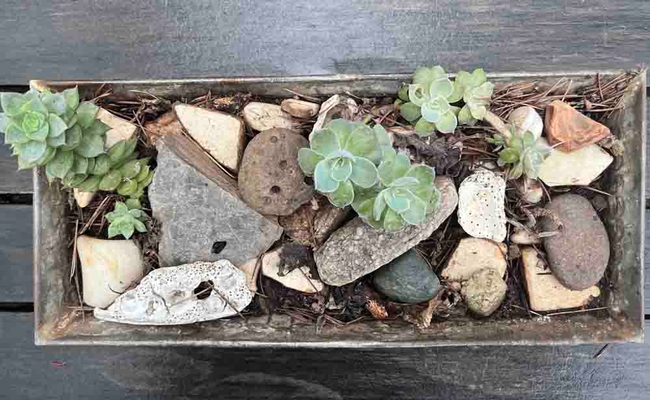
When looking at “mystery” succulents think in terms of leaf shape, color, and thickness. Then look to see if there are offsets. Are the offsets located on stolons or attached to a main stem? Watch for flowers and see if they are bell shaped or star shaped. All of these characteristics will provide information about the genus of the “mystery” succulent.
Table for identifying Echeveria, Sempervivum, and Graptopetalum:
|
Characteristics of common varieties |
Echeveria |
Sempervivum |
Graptopetalum |
|
Origin |
North & South America |
Europe |
South America |
|
Rosette size |
3/4”-20” diameter |
1”-5” diameter |
2”-5” diameter |
|
Offset Spread |
spread from a main stem |
clumping, stolon held |
rosettes break off from root |
|
Leaves |
thick & spoon-like |
narrow & pointy |
thickest & rounded |
|
Leaf color |
gray-green, bluish |
gray-green, red-brown |
chalky gold or green |
|
Flower shape |
bell shaped |
star shaped |
star shaped |
|
Flower color |
white, orange, pink, red |
red, yellow, pink |
white/red, yellow |
|
Flower growth pattern |
on stem amidst leaves |
on stolon from center |
stem from center |
|
Common name |
Hen & Chicks |
Hen & Chicks |
Ghost plant |
Table created by Barbara Ott
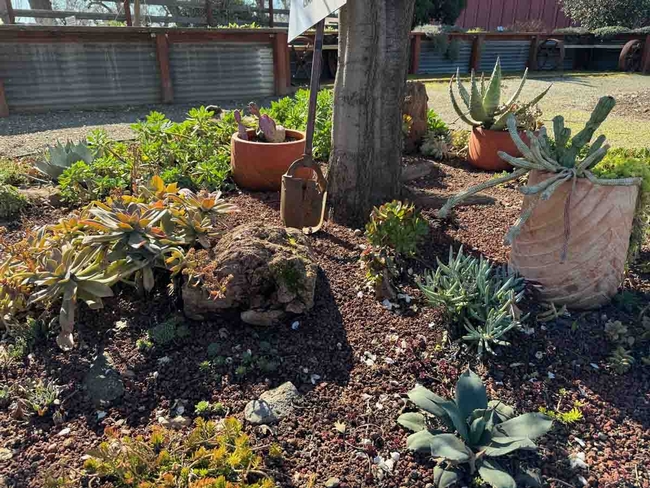
UC Master Gardeners of Butte County are part of the University of California Cooperative Extension (UCCE) system. To learn more about us and our upcoming events, and for help with gardening in our area visit our website. If you have a gardening question or problem, email the Hotline at mgbutte@ucanr.edu or leave a phone message on our Hotline at 530-552-5812. To speak to a Master Gardener about a gardening issue, or to drop by the MG office during Hotline hours, see the most current information on our Ask Us section of our website.